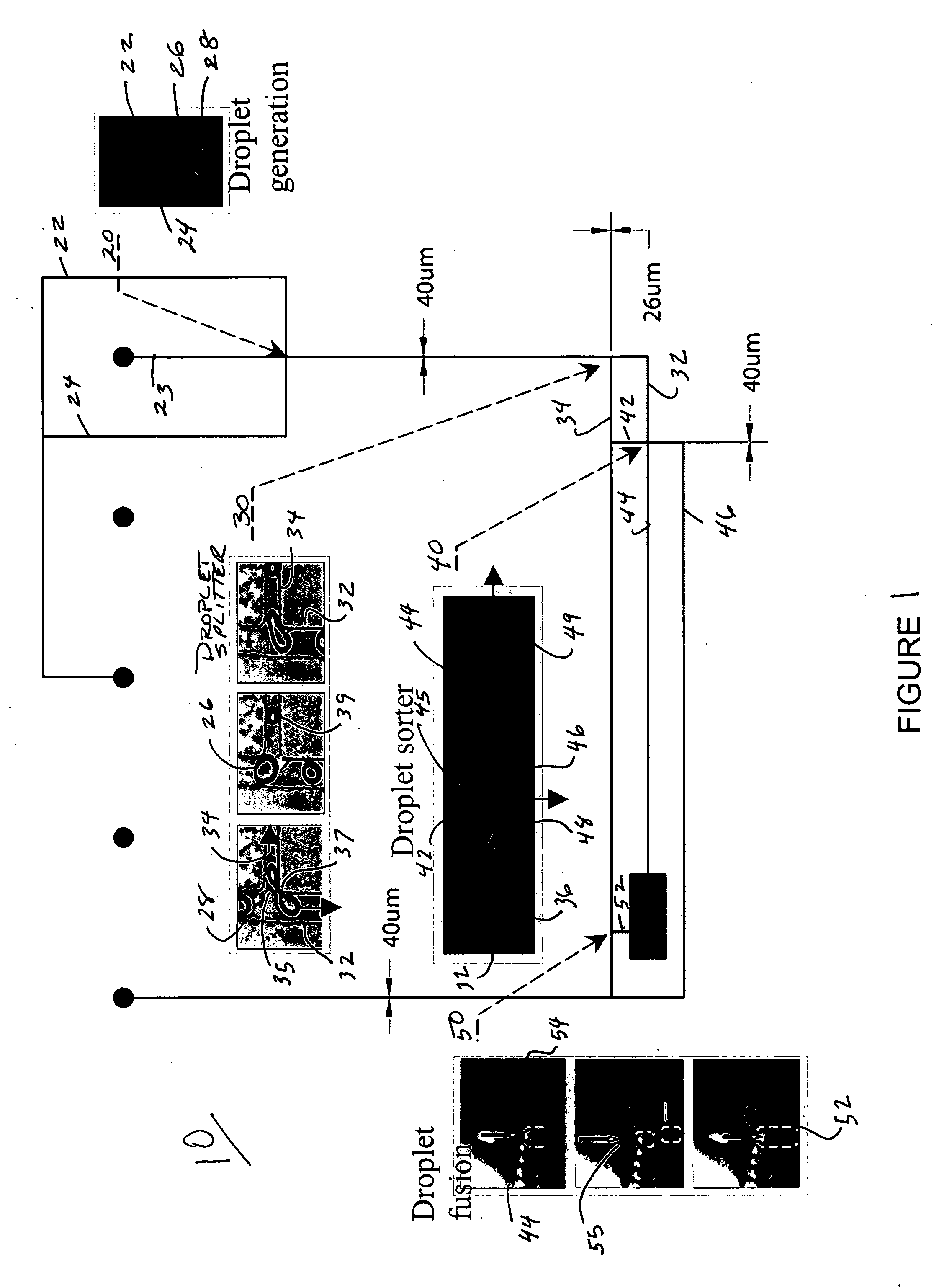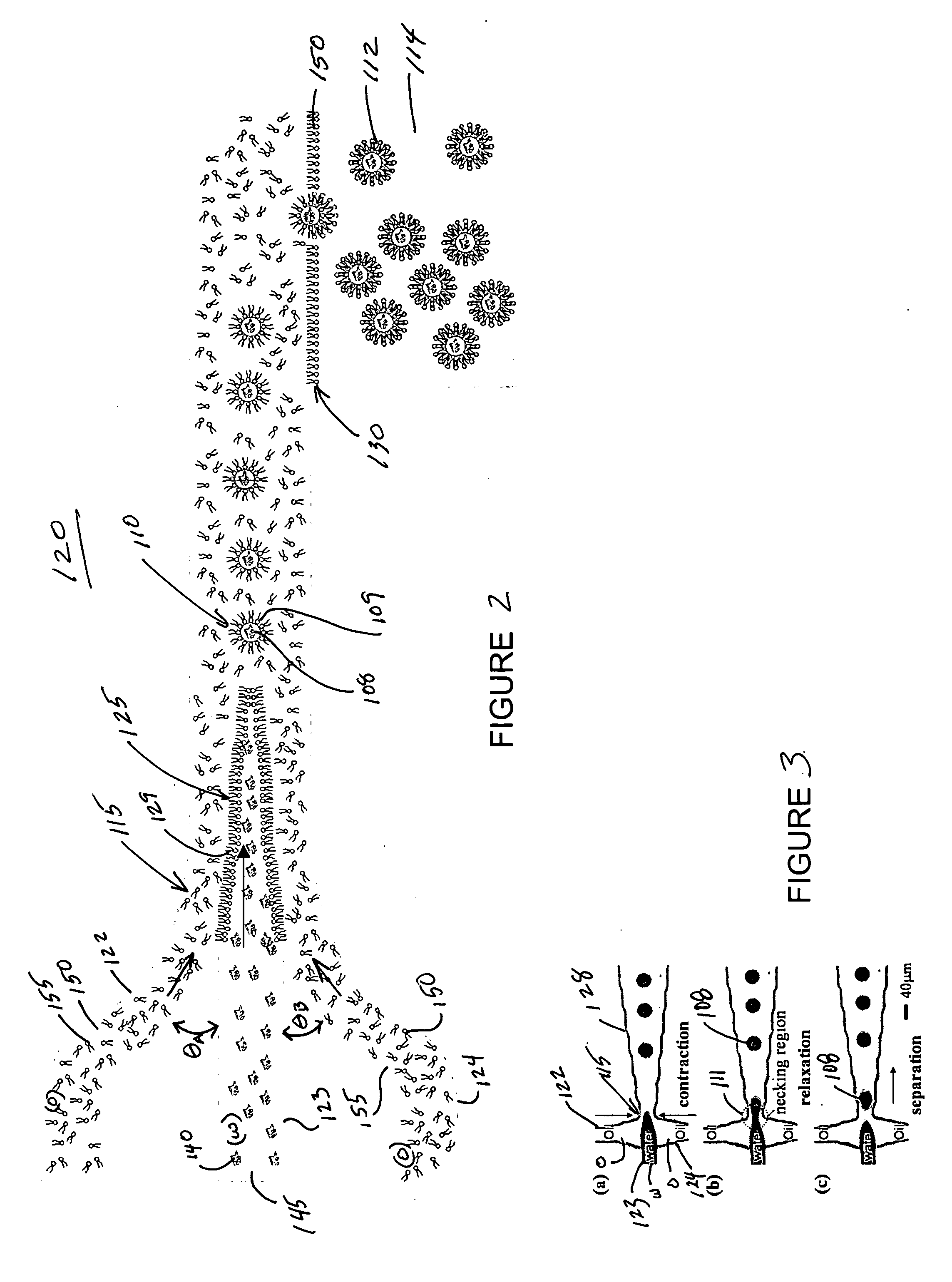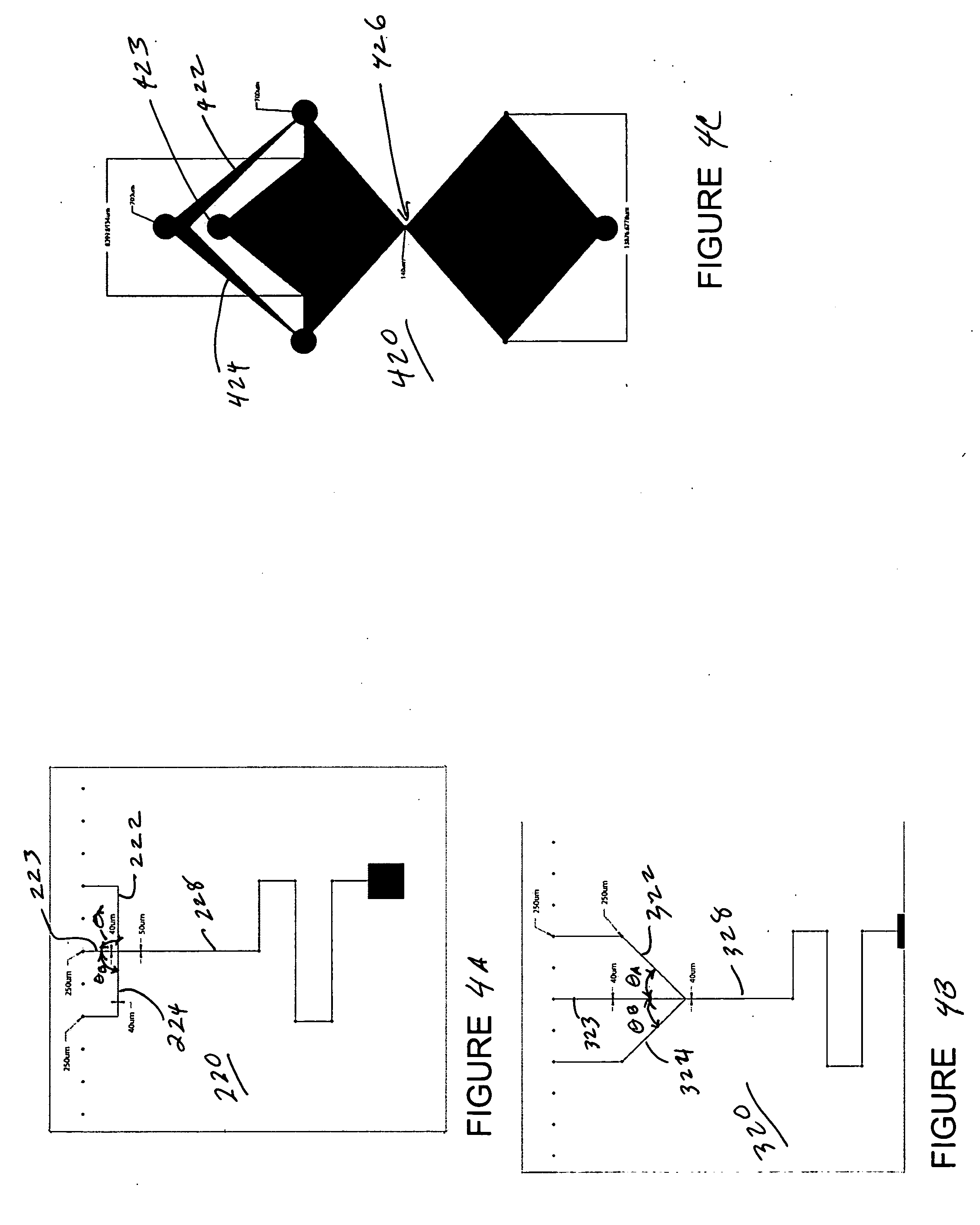Microfluidic devices for controlled viscous shearing and formation of amphiphilic vesicles
a microfluidic device and amphiphilic vesicle technology, applied in the direction of positive displacement liquid engine, laboratory glassware, instruments, etc., can solve the problems of not being able to control the speed and size of droplet generation, the size of droplets is limited to the diameter of the channel or the pores, and the bulk mixing process tends to not allow individual control of the composition, so as to facilitate programmable size control
- Summary
- Abstract
- Description
- Claims
- Application Information
AI Technical Summary
Benefits of technology
Problems solved by technology
Method used
Image
Examples
Embodiment Construction
[0036] The present invention includes microsystem platforms that enable the automation of complex self-assembly processes. Turning to the figures in detail, FIG. 1 shows a microsystem 10 that is embodied on a single microchip for droplet or vesicle formation 20 in which the droplet size and droplet formation speed can be controlled and which also includes designs for post-assembly and post-processing of the droplets (30, 40 and 50), which is discussed in greater detail below. Advantageously, the microsystem 10 of the present invention, and particularly the droplet or vesicle formation system 20, facilitates programmable control of size and composition of emulsified droplets, controlled multi-lamellar and asymmetric vesicles, 100% encapsulation of reagents (e.g. to save precious drugs and reagents), controlled insertion of membrane proteins, and sorting of vesicles / droplets. This microfluidic platform enables the control of concentrations of solvents, lipids, co-block polymers and th...
PUM
| Property | Measurement | Unit |
|---|---|---|
| angle | aaaaa | aaaaa |
| diameter | aaaaa | aaaaa |
| size | aaaaa | aaaaa |
Abstract
Description
Claims
Application Information
 Login to View More
Login to View More - R&D
- Intellectual Property
- Life Sciences
- Materials
- Tech Scout
- Unparalleled Data Quality
- Higher Quality Content
- 60% Fewer Hallucinations
Browse by: Latest US Patents, China's latest patents, Technical Efficacy Thesaurus, Application Domain, Technology Topic, Popular Technical Reports.
© 2025 PatSnap. All rights reserved.Legal|Privacy policy|Modern Slavery Act Transparency Statement|Sitemap|About US| Contact US: help@patsnap.com



